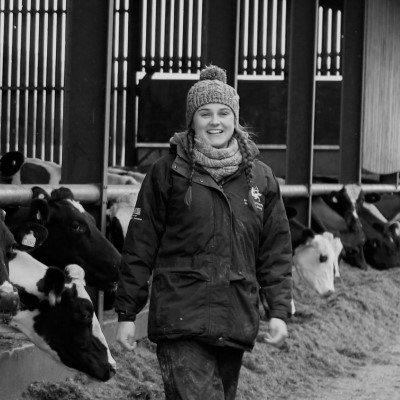CIEL | Blog: Exploring new innovations for Net Zero
Dr Mark Young

Following on from our previous blog introducing our new Net Zero & Livestock: Bridging the Gap report, we wanted to take this opportunity to highlight some of the technologies highlighted in the report, as well as CIEL’s current efforts through existing projects.
Tackling ruminant methane
- Methane inhibitors
We’ve previously explored the potential impact of methane inhibitors, for example, reducing emissions by 22% in sheep farming, and supporting a 31.5% reduction in emissions on grazing dairy units. Read more about this modelling work in our Sector Fact Sheets - Methane vaccines
Whilst developing vaccines is a challenge in itself, the potential annual methane reduction from such vaccines is estimated to be around 30%. The biggest impact would come from vaccines targeting all rumen methanogens, rather than a selective few.
The benefits of good animal health
- Vaccination against endemic disease
Despite recent progress, vaccination uptake is relatively low within the cattle sector compared to pigs and poultry. Preventing Infectious Bovine Rhinotracheitis (IBR) and Johne’s disease in dairy cattle would reduce total sector GHG emissions by - Diagnostics for disease
Improving diagnostics will be critical to moving the dial. Better and more affordable pen-side diagnostics is something CIEL is working on in a couple of different projects – seeking to improve detection of Johne’s disease and mastitis, and exploring testing alternatives for Bovine Tuberculosis (Btb). Based on workshops we’ve been running with farmers and vets, it’s not just me that thinks diagnostics is a really exciting area.
Capturing carbon
- Biochar
Soil carbon sequestration is a hot topic, but can biochar offer a more effective route to locking away carbon faster and to a greater extent? It’s clear from existing research that the use of biochar could help deliver a net zero future and has other benefits such as improvement in soil health, and soil water retention. However, it needs upscaling, greater technological readiness and changes to current regulations before it can be considered a viable large-scale solution.
Unlocking the value in Manures
- Novel technologies for managing waste
Livestock systems create manure and lots of it. This releases emissions in storage and spreading. One answer is plasma treatment technology for unlocking the potential of farmyard slurries as high value fertilisers. It’s a new and novel process which takes time to effectively legislate for, but has the potential to deliver impact at scale.
The innovations mentioned above give a flavour of what you can find in our recent Net Zero & Livestock: Bridging the Gap report. More broadly, a continued focus on the science is important, enabling the evidence for effective decision-making in our collective efforts to tackle emissions reductions and work towards Net Zero targets.
If you are interested in learning more about these innovations or would like to discuss the report in detail, please get in touch.


Dr Mark Young, Innovation Specialist
Mark is CIEL’s Innovation Specialist, coming to CIEL in 2016 after 15 years as senior geneticist for Beef and Lamb New Zealand. He has a wide-ranging knowledge of animal science with particular interests in meat production and the application of genetics to improve livestock, for the ruminant sector in particular. Mark provides expert technical support to project development and delivery while also identifying opportunities for innovation, guiding development of thought leadership activities and representing livestock industry interests.







